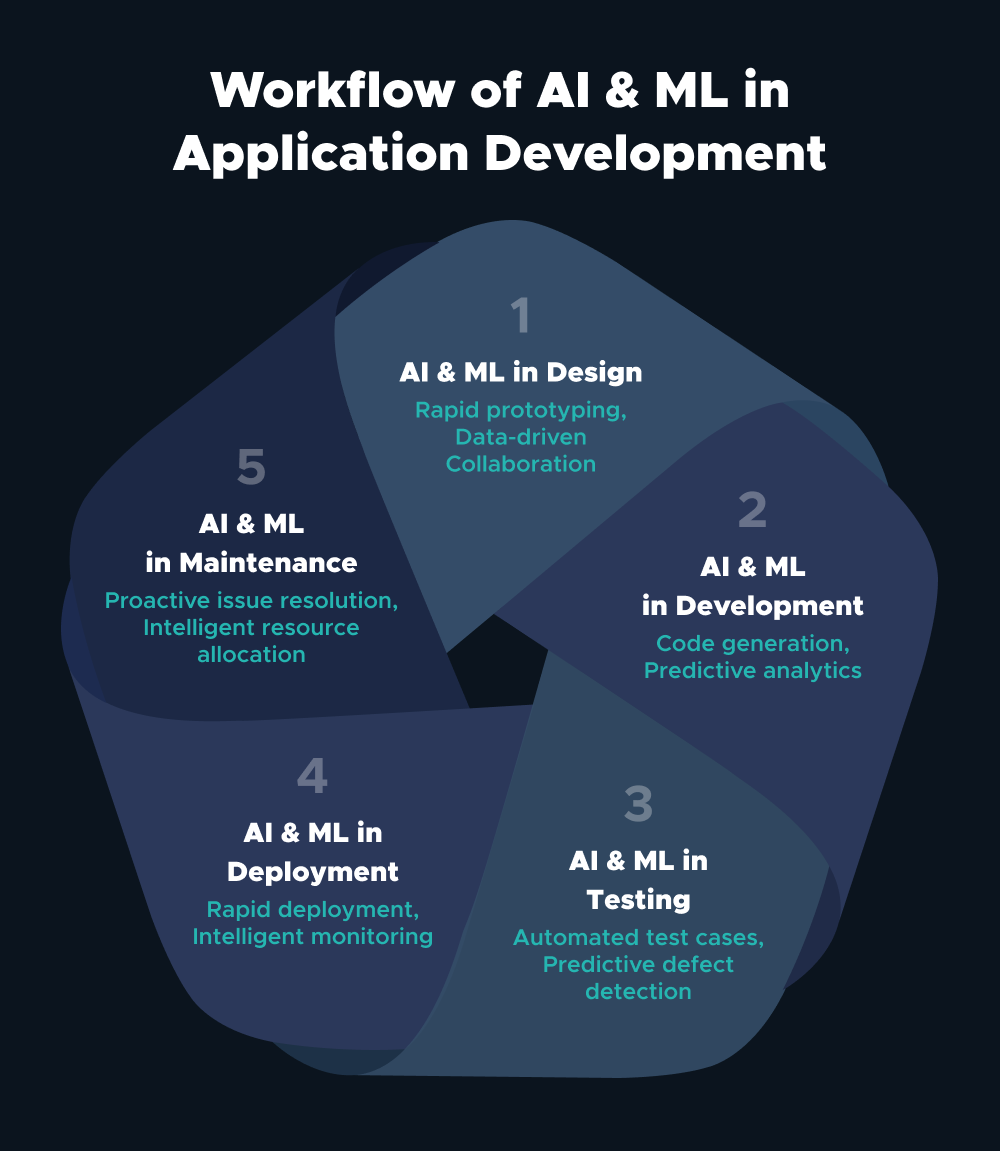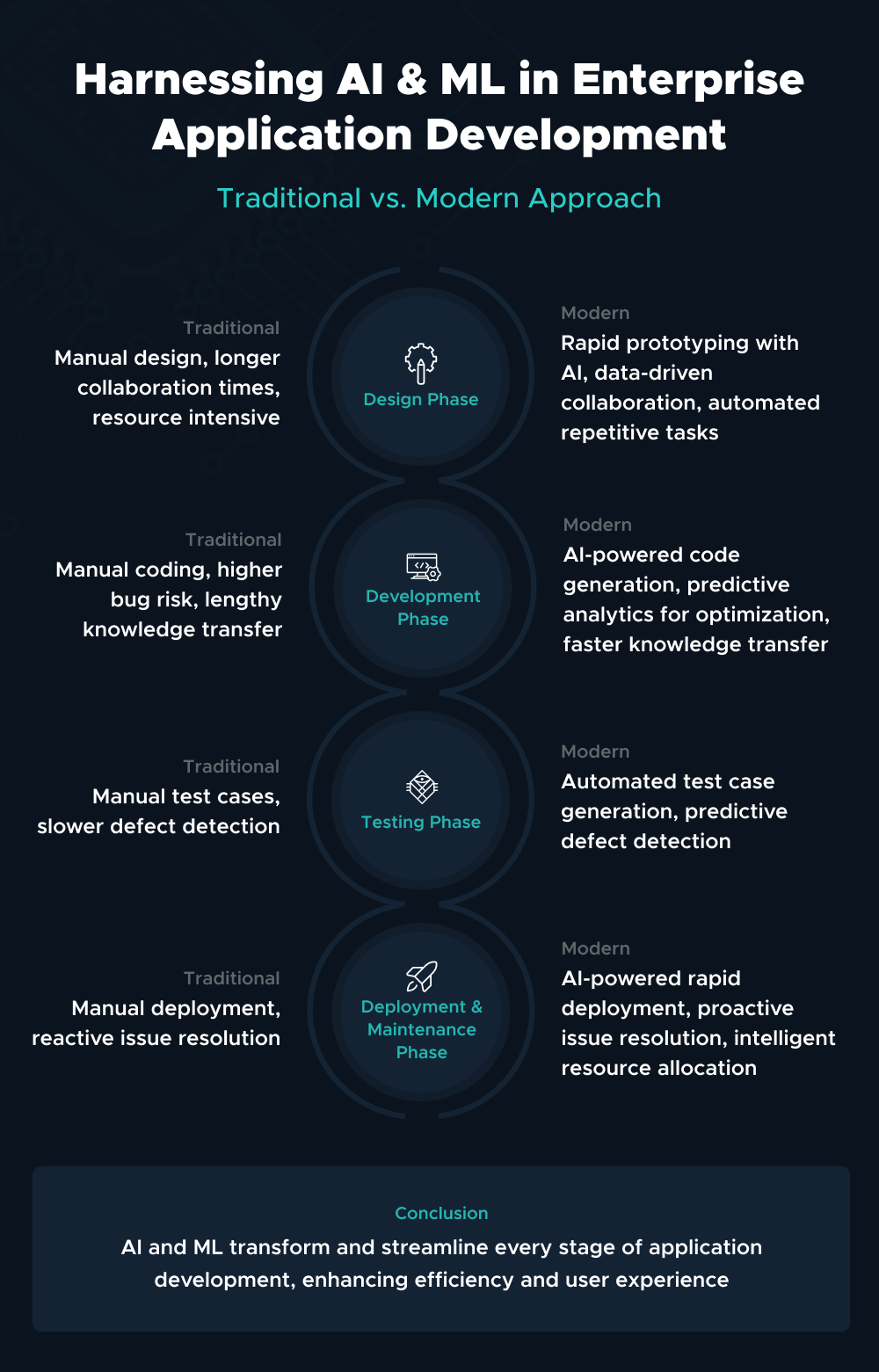Automating App Testing with AI and Machine Learnings
In the current hyper-competitive business landscape, merely meeting user expectations no longer suffices. To stand out, one must consistently surpass them. The powerful duo of Artificial Intelligence (AI) and Machine Learning (ML) offers the means to revolutionize development procedures and elevate user experiences. As corporate leaders strategize about integrating these cutting-edge technologies into their application development blueprint, understanding the tactical benefits, the potential for accelerating processes, and the imperative ethical considerations becomes crucial. This comprehensive narrative provides an in-depth exploration of these facets, arming business leaders with the necessary know-how to navigate this multifaceted terrain.

Leveraging Strategic Advantages of AI and ML in Application Design
-
Transforming the Design Process with AI-Powered Rapid Prototyping Tools: Unleash the power of AI-based design instruments to expedite prototyping and fashion user interface mockups that cater specifically to your target audience. Such tools employ AI algorithms for a deep dive into user preferences, crafting design prototypes that align perfectly with customer needs, thus saving precious time and resources during the development phase.
-
Augmenting Collaboration and Decision-Making Using AI-Infused UI Design Tools: Deploy AI-enabled design tools to catalyze effective team collaboration via data-driven insights and recommendations. Such tools can help identify potential design mismatches, suggest viable alternative solutions, and prioritize design elements, thereby fostering an efficient decision-making process and a unified final product.
-
Task Automation with AI & ML: Let AI and ML take over monotonous tasks such as color matching, layout creation, or code generation. This frees up your design team to focus on more complex and creative aspects, thereby optimizing productivity and accelerating the design process
-
Scalability & Future-proofing with AI and ML: Use AI and ML to predict the scalability needs of an application during the design phase. These tools can forecast user growth and data volume increases, allowing designers to plan and build applications with peak performance characteristics from the outset. This forethought can lead to substantial savings in time and resources and prevent expensive redesigns and infrastructure modifications down the line.

Revving up Application Development with AI and ML
-
Boosting Development Efficiency with AI-Powered Code Generation & Analysis: Take advantage of AI-empowered code generation tools to speed up development and preemptively spot potential bugs and vulnerabilities, ensuring developers rectify these issues well before they affect end-users.
-
Using ML Models for Predictive Analytics and Data-Driven Decision-Making in Application Development: ML models can analyze vast amounts of data to detect patterns and drive data-backed decisions. By incorporating predictive analytics, businesses can proactively tackle potential issues and enhance application performance, delivering an unmatched user experience.
-
Facilitating Knowledge Transfer with AI and ML: Leverage AI and ML to capture and disseminate knowledge across development teams. This speeds up the learning curve for new team members and ensures consistency and quality in application development.

Amplifying Quality Assurance and Testing through AI and ML
-
Streamlining Test Case Generation and Execution with AI-Driven Tools: AI-based testing tools can automatically generate and execute test cases, reducing the time and resources required for manual testing. By incorporating AI and ML into their testing processes, businesses can enhance defect detection and shrink the time-to-market for their applications.
-
Augmenting Defect Detection and Minimizing Time-To-Market with Machine Learning Algorithms: Machine learning algorithms can sift through historical data to predict potential defects in application development. By proactively addressing these issues, businesses can substantially reduce time-to-market and deliver highly reliable applications to their users.
Employing AI and ML in Deployment and Continuous Integration
-
Expedited Deployment & Intelligent Monitoring: AI and ML technologies can simplify deployment processes and offer intelligent monitoring of system logs and performance metrics, providing real-time insights into potential issues and ensuring proactive resolution.
-
Continuous Testing & Predictive Maintenance: Machine learning algorithms can examine test results, optimize testing strategies, and ensure extensive test coverage. AI-driven predictive maintenance can foresee potential system failures, propose preventative measures, and enhance system reliability.
-
Enhancing Deployment Automation with AI and ML: By learning from past deployments, AI and ML can improve deployment automation tools, reducing the probability of errors and accelerating the release cycle.
The Strategic Advantages of AI and ML in Maintenance and Support
-
Proactive Issue Resolution & Self-Healing Systems: AI-powered tools can parse through system logs and performance data to detect anomalies and proactively resolve issues before they escalate. Moreover, self-healing systems can autonomously address minor issues, thereby reducing downtime and manual intervention.
-
Intelligent Resource Allocation & Optimization: AI-driven resource allocation can optimize the efficiency of maintenance processes, ensuring the best use of computing resources and reducing maintenance costs.
-
Enhanced Customer Support & AI-Assisted Troubleshooting: AI and ML technologies can revolutionize customer support by automating responses to common queries, reducing response times, and providing personalized assistance. AI-assisted troubleshooting can help quickly identify the root causes of issues and recommend effective solutions.
-
Gaining Insights into User Pain Points and Preferences through AI-Powered Analytics: AI-powered analytics tools can yield valuable insights into user pain points and preferences, enabling businesses to refine their applications accordingly. By understanding user behavior patterns and addressing pain points, businesses can boost user satisfaction and drive customer retention.
Conclusion
The groundbreaking potential of AI and ML in business application development lies in its ability to redefine user experiences and streamline development processes. By embracing these cutting-edge technologies, corporate leaders can fuel innovation and retain a competitive edge. However, ethical considerations and challenges must be addressed to ensure responsible and sustainable AI adoption. With a strategic approach to integrating AI and ML, businesses can revolutionize their application development processes and deliver unmatched user experiences.